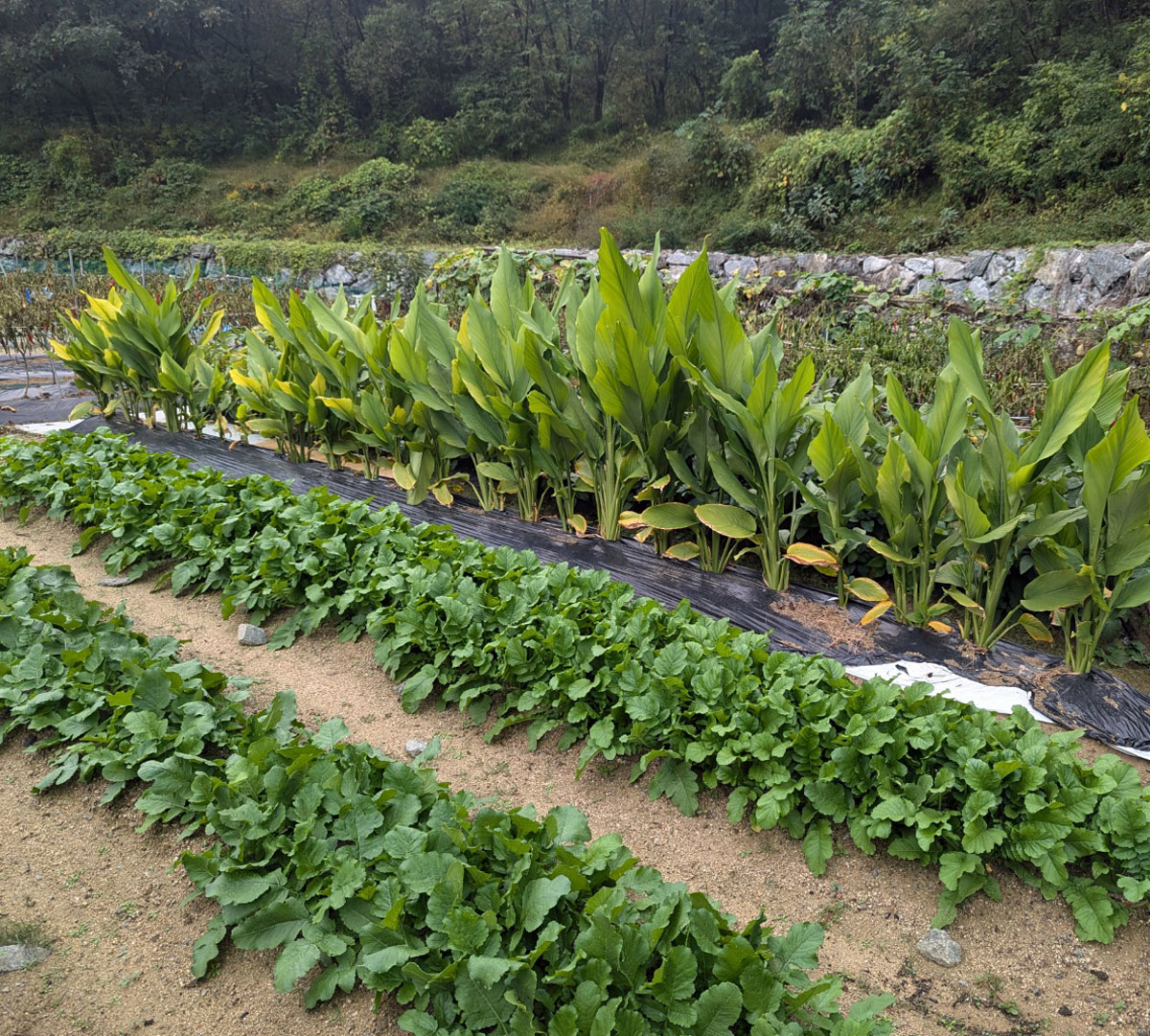It’s unfortunate that the word “opportunist” is negative. I can’t think of a positive equivalent. So, for a moment, just imagine that the word were neutral and meant what it sounds like; “a person who takes advantage of opportunities.” In that sense, maybe I’m less of an optimist who sees the bright side, and more of an “opportunist” who sees the opportunities. That would help explain why I’m so fascinated by what I might call Korea’s “agricultural opportunism.” Or if there were a slogan for this concept, it could be “leave no space unfarmed!”
Let’s envision the stereotypical American suburban home with a green grass lawn and white picket fence. Now replace the image of the lawn with a flourishing vegetable garden. Think deeper, and imagine the chore of lawn mowing vanishing, replaced by a labor of love growing beautiful flowers and vegetables in its place (the envy of the neighborhood!). Use your imagination to transform the white picket fence into a trellis of roses or passion fruit. Take it yet a step further, and let the vague vision of a bucolic garden morph into a small field, overflowing with food crops, farmed efficiently like I wrote about in The Golden Club Garden.
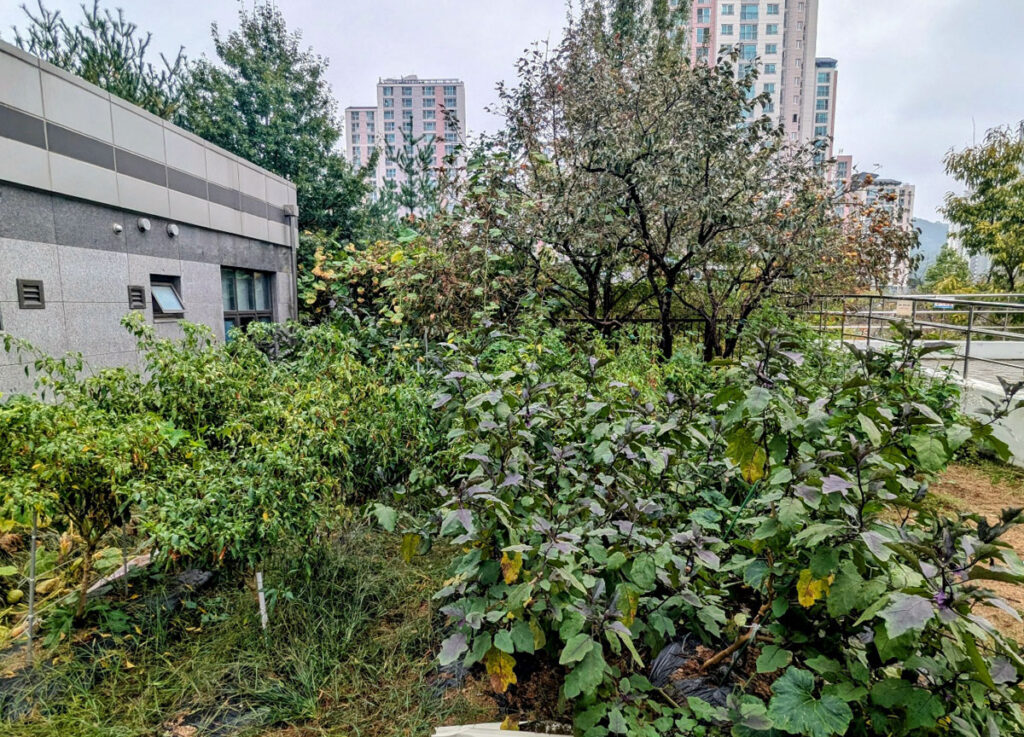
There’s something to be said of a country with a rich agriculture and food history that is still so ingrained in the people’s blood. Korea may layer technology and pop music on top of its public image, obscuring its roots like a techno-mulch, but just under the surface, it is all agriculture at heart. It can’t be suppressed. Like a person who doodles on meeting notes because the expression of their artistic side must come out. In Korea, we find “farms” in small scale verandas, in pots, Styrofoam containers and milk cartons, on the steps of buildings, or alleyways in between.
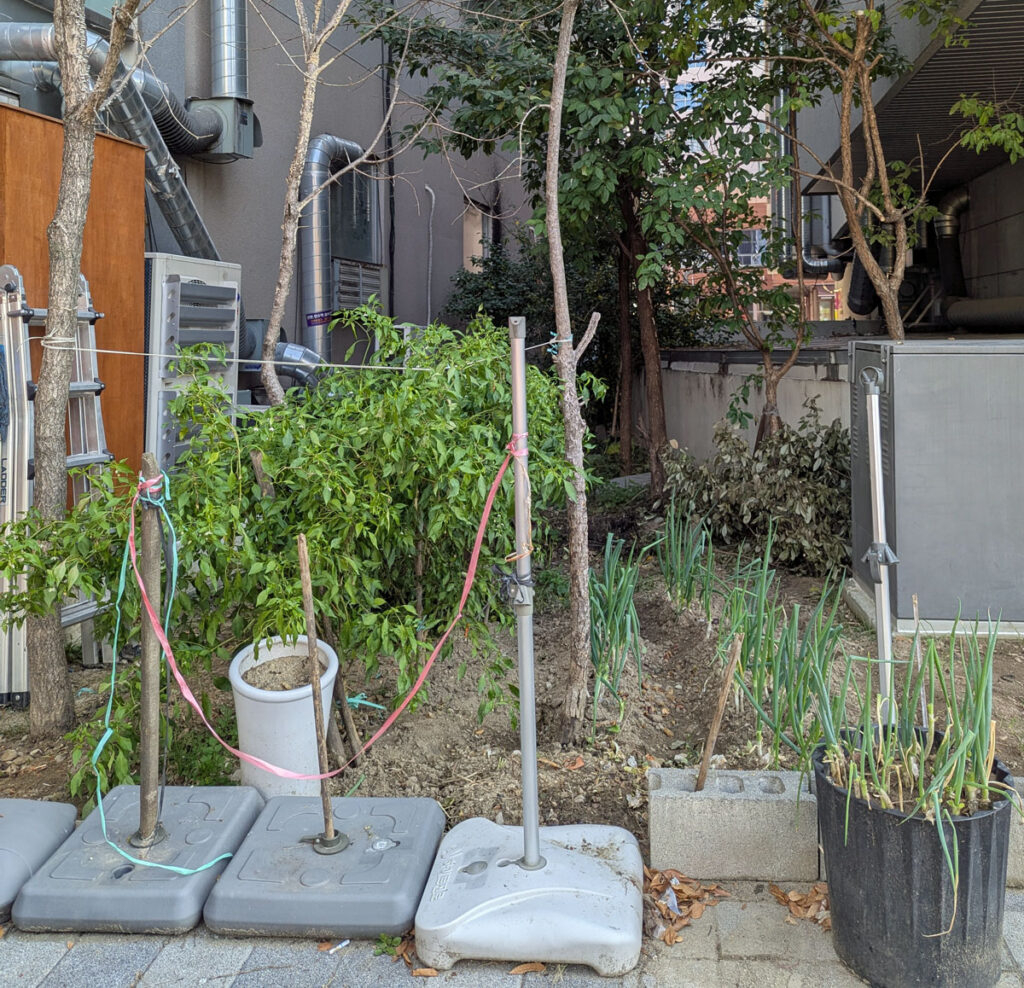
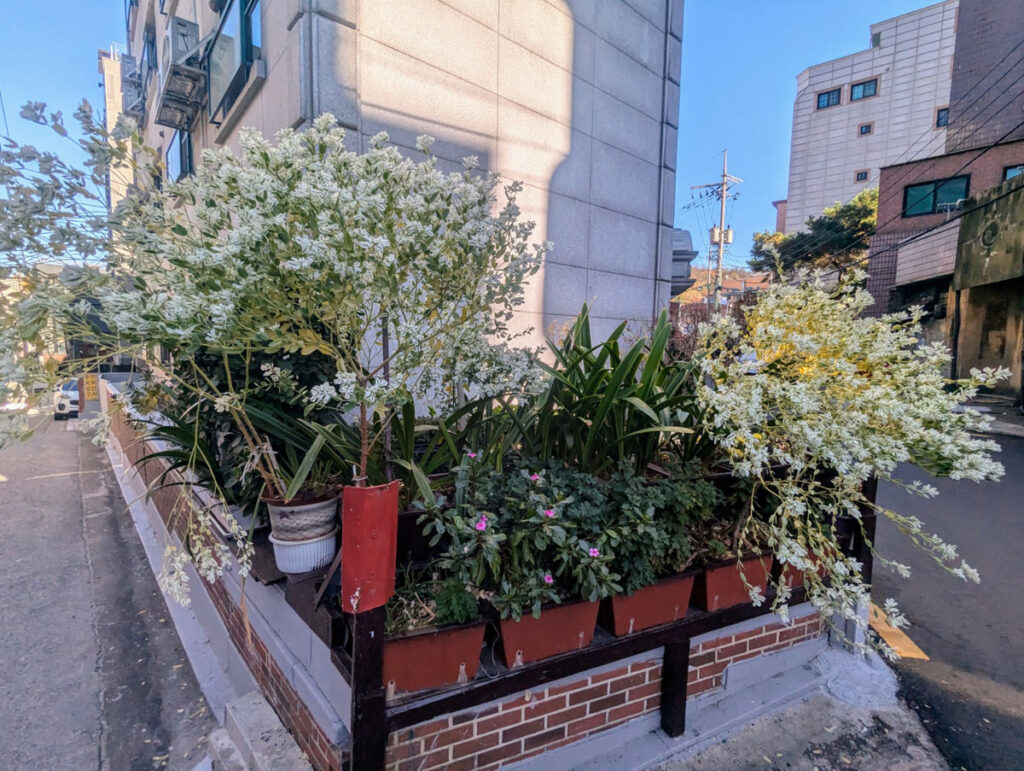
One idea we especially like is on a bit of a greater scale – farming on vacant lots. It’s unsurprising that we have never encountered this in Seoul, because the city is so dense, and real estate is at such a premium.
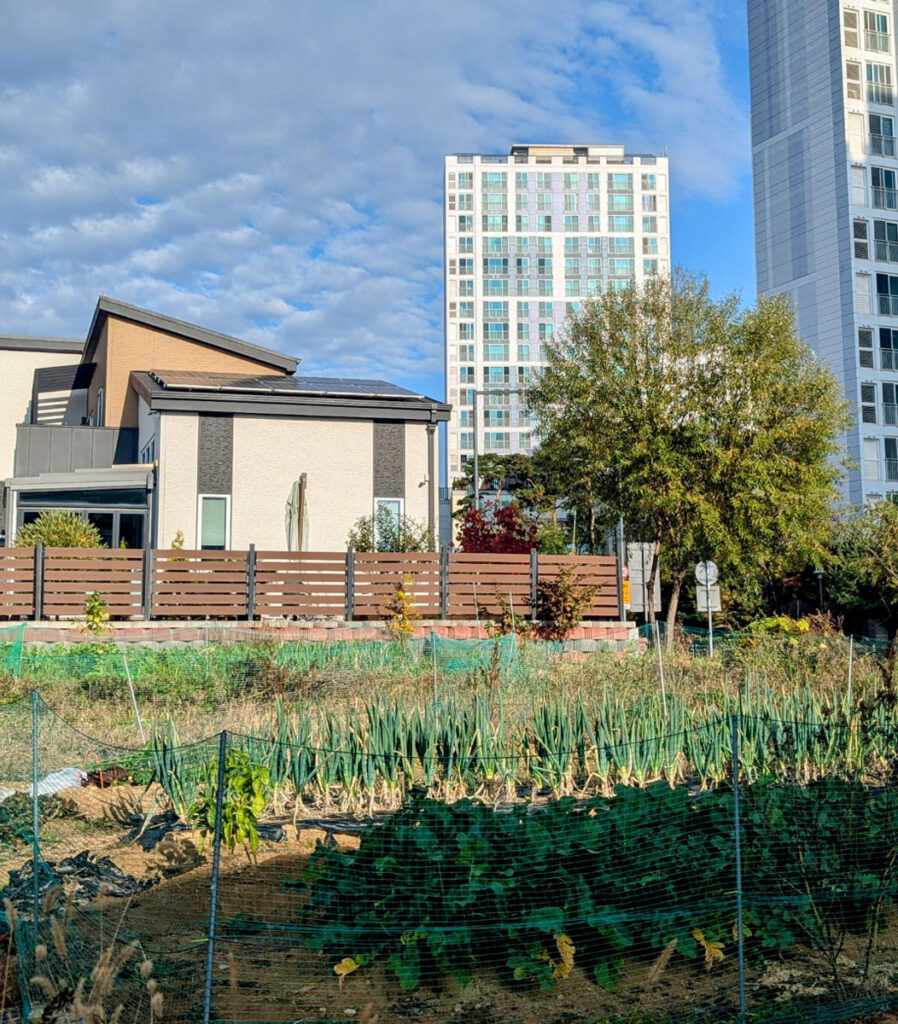
What at first appeared to be large yards, planted with garden rows, we started to realize were actually full-sized, undeveloped residential plots. Yet, someone was growing entire home-sized garden fields on them. One day, while taking a “tour” of some garden “lots,” in a section of Sejong City (세종시), we spotted someone tending to his field under the mountain. He noticed us, and waved us in, introducing himself as Mr. Seon (선).
Mr. Seon’s Fall garden was beautiful, lush with growth, and even had freshly planted garlic of a family heirloom variety. We had many questions, and he had many answers. What could easily have been mistaken for a small farm, was in fact just a hobby that he had taken more seriously since retiring. Like many Koreans, he’d grown up around agriculture, but it wasn’t until retirement that he finally left the big city life and had the time to explore gardening.
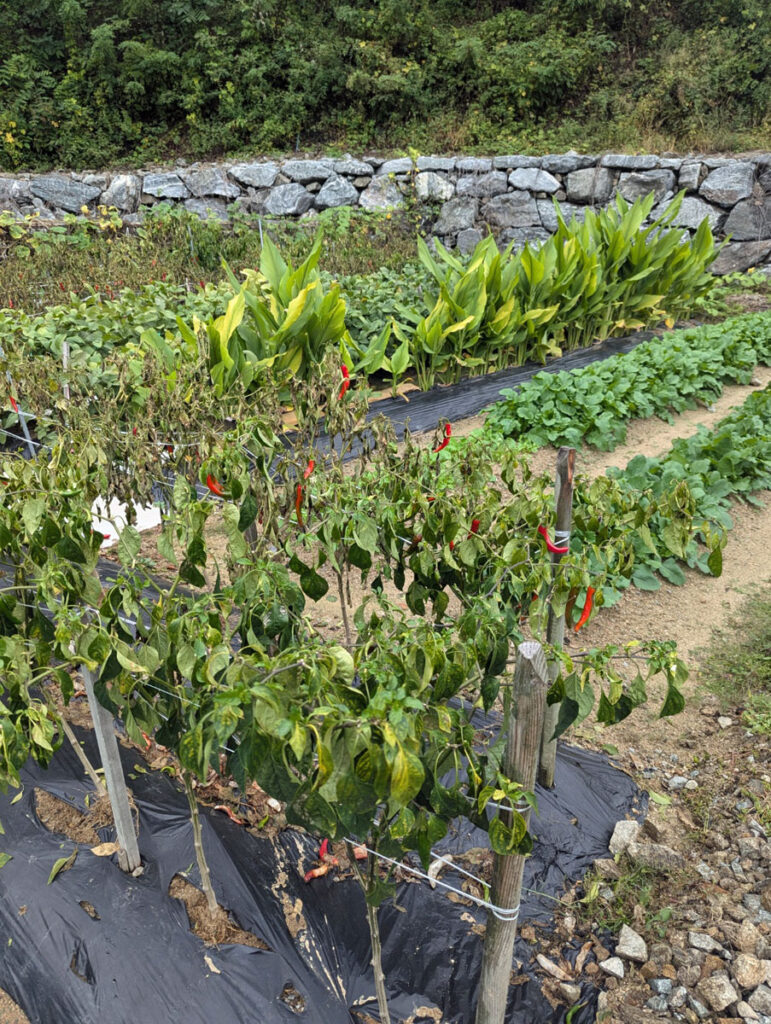
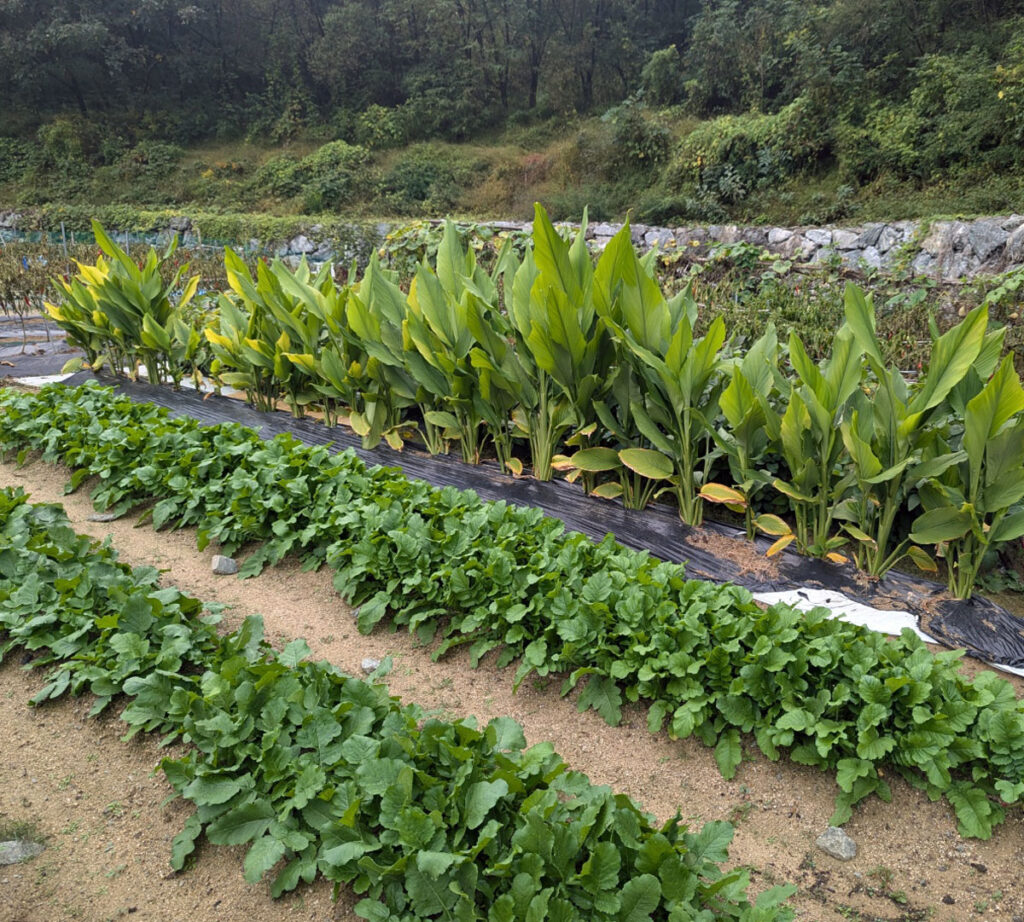
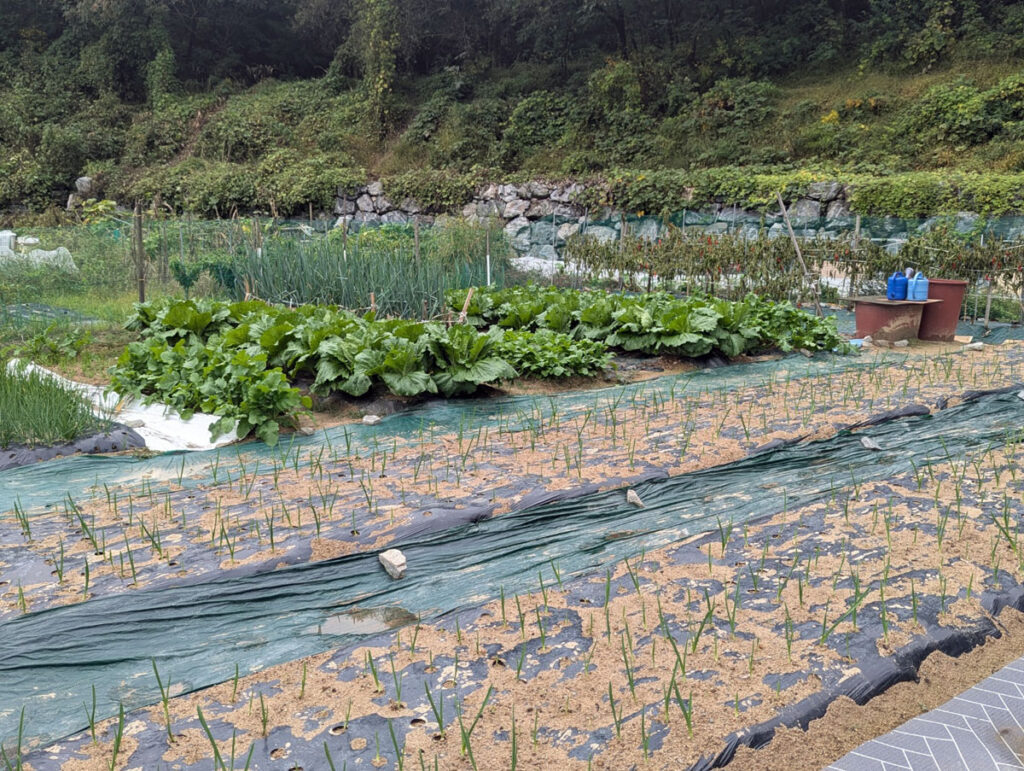
Although this plot of land does not belong to him, he has a flourishing garden/mini-farm on it. When he first came to Sejong City, it turned out that there were still several unsold plots in the neighborhood near his apartment. He talked to the realtor for the lot, and they agreed to let him use the space for gardening until it sold. “His” plot happened to be just under the mountain, in a less favorable spot for a home, but a great location for a garden.
He doesn’t own the property, and could lose access at any time, along with his hard work. However, rather than seeing a risk, Mr. Seon, along with others in the area, saw an opportunity. Why let the land sit unused, when there is so much potential? Instead of letting undeveloped plots sit idle, collecting errant trash, becoming overgrown, or harboring mosquitos and pests, this land is productive. It’s good for the land, good for aesthetics, good for the people, and produces good food.
From a purely transactional perspective, the realtor enjoys a beautified neighborhood, and a better standing with local residents. Homeowners next door get to look out the window and see growth, and an abundance of food, rather than an empty lot filled with debris that brings down their own property value.
We especially love this concept because it cuts through a lot of red tape to do something that benefits humanity. “Humanity,” with the definition of benevolence. This is a template that we think should be replicated where possible, to awaken or nurture that inner need to grow gardens, to sow seeds and harvest crops. It exudes the attitude that, “where there is a will, there is a way,” and we can and should grow food everywhere. It is a partnership between people, businesses, and the neighborhoods they coexist in. While it may not be possible to do this everywhere, this concept inspires us to dream of ideas we can implement in our own lives.

